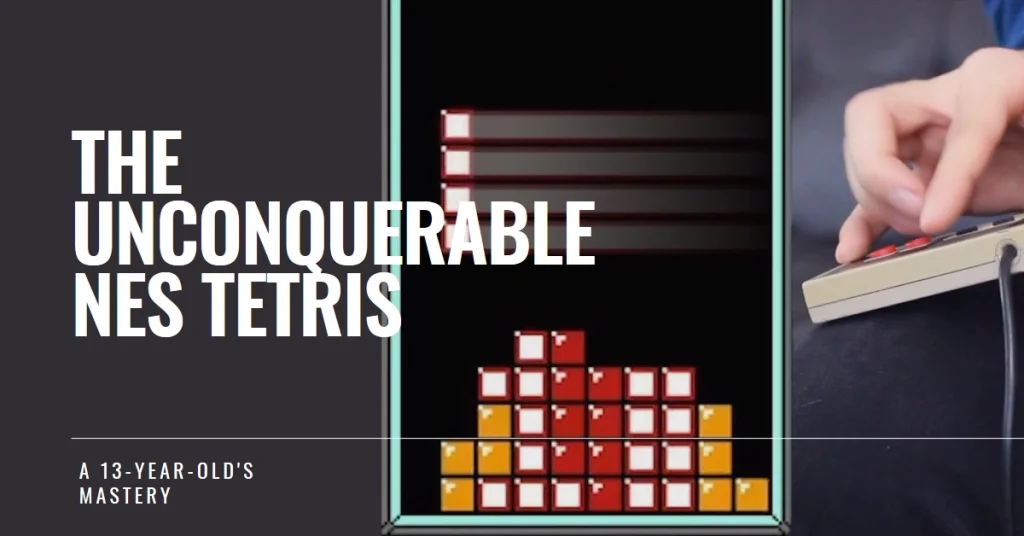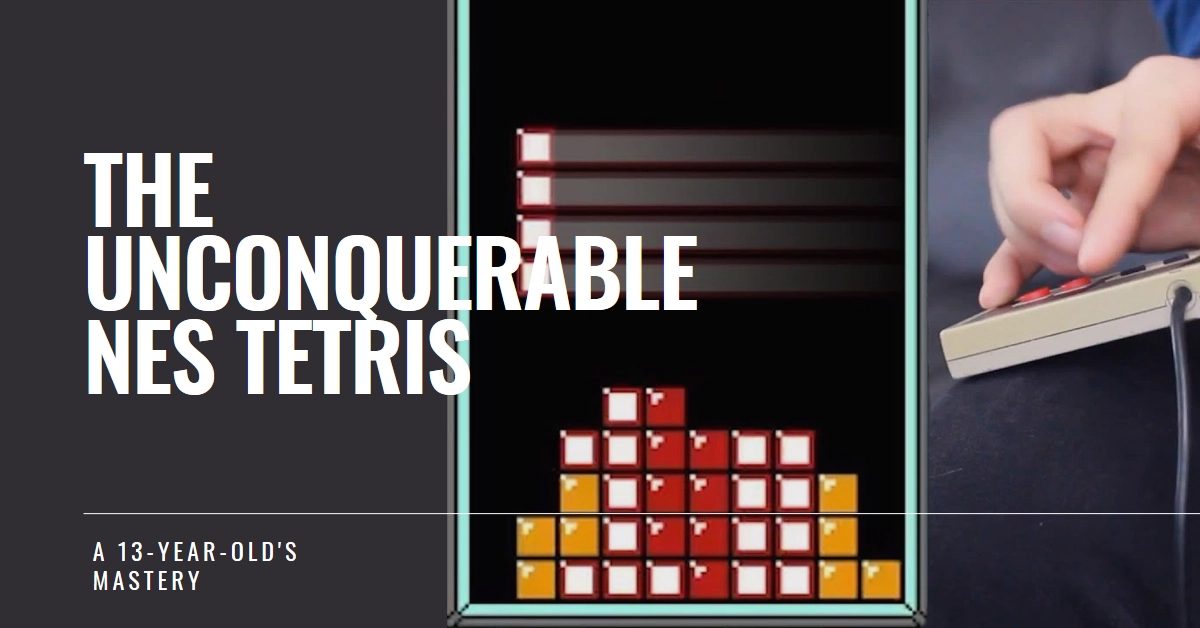For decades, the original NES Tetris stood as an immovable giant. Considered unbeatable by human hands, its punishing difficulty and technical limitations seemed destined to forever relegate it to the realm of “games that break you.”
But in 2023, a 13-year-old gamer named Willis Gibson, under the alias Blue Scuti, shattered this long-held belief. Using a revolutionary technique called “rolling,” he not only pushed the boundaries of human skill, but also rewrote the history of one of the most iconic video games ever made.

This article delves into the story of Blue Scuti’s triumph, examining how the “rolling” technique works, its impact on the Tetris community, and the implications for future human and machine interaction with seemingly unbeatable video games.
The Unbreakable Wall: Why NES Tetris Was Considered Unbeatable
The original NES Tetris, released in 1989, is infamous for its brutal difficulty. Unlike later versions, it lacks features like line-locking and soft dropping, making precise piece placement and high speeds essential for survival.
As the game progresses, the pieces fall faster and faster, culminating in the infamous “kill screen” at level 29 – a glitching mess that renders the game unplayable. For 34 years, reaching this screen was the closest anyone came to “beating” Tetris, with scores plateauing around level 38.
Enter the Rolling Revolution: A New Way to Play
In 2021, the Tetris community was abuzz with the discovery of a new technique called “rolling.” Pioneered by players like Hector “Fly” Rodriguez and perfected by Blue Scuti, rolling involves resting the NES controller on your palm while using your fingers to rapidly roll its bottom edge, effectively vibrating the D-pad.
This allows for hyper-fast directional commands, far exceeding the limitations of traditional thumb movements.
How Rolling Works: A Technical Breakdown
Imagine a single finger tap taking about 0.1 seconds. With rolling, you can achieve up to 20 “taps” per second by rapidly rolling your fingers across the controller’s edge.
This lets you shift, rotate, and drop Tetris pieces with unparalleled speed and precision. Think of it as playing the game in fast-forward, but with complete control.
Blue Scuti’s Masterful Performance: From Practice to Perfection
Armed with rolling and years of dedicated practice, Blue Scuti embarked on his quest to conquer the impossible. He meticulously honed his skills, pushing himself to maintain hyper-focused concentration for over 38 minutes of nonstop Tetris action.
Every move, every rotation, every line clear was a testament to his unwavering determination and mastery of the technique.
Reaching the Kill Screen: A Moment for the Ages
On October 27, 2023, the world watched as Blue Scuti’s stream crossed the 38-minute mark. Tension mounted as he navigated the ever-increasing speed, his rolling fingers a blur against the controller. Finally, at level 157, the inevitable arrived.
The screen glitched, lines overflowed, and Tetris crashed, signaling the game’s defeat. Blue Scuti had achieved the unthinkable – he had beaten NES Tetris.
The Impact of Blue Scuti’s Victory: A Ripple Effect Through the Gaming World
Blue Scuti’s triumph resonated far beyond the Tetris community. It reminded us that human ingenuity and perseverance can overcome seemingly insurmountable obstacles, even in the digital realm. It sparked renewed interest in classic games and the potential for rediscovering them with new techniques and perspectives.
Furthermore, it opened up a fascinating discussion on the evolving relationship between humans and machines in the context of game difficulty and mastery.
Rolling Forward: The Future of Human-Machine Interaction with Games
Blue Scuti’s achievement raises intriguing questions about the future of games and our interaction with them. Will advanced techniques like rolling become commonplace, blurring the lines between human and machine skill? Will developers need to consider factors like technique evolution when designing future games? These are questions that the gaming community will grapple with for years to come.
One thing is certain: Blue Scuti’s mastery of NES Tetris through the “rolling” technique has forever etched his name in gaming history.
It is a testament to the power of human will, innovation, and dedication, proving that even in the face of seemingly insurmountable challenges, sometimes, all it takes is a new way to play.
